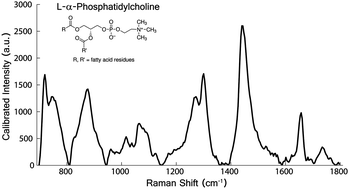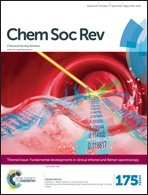Clinical instrumentation and applications of Raman spectroscopy
Abstract
Clinical diagnostic devices provide new sources of information that give insight about the state of health which can then be used to manage patient care. These tools can be as simple as an otoscope to better visualize the ear canal or as complex as a wireless capsule endoscope to monitor the gastrointestinal tract. It is with tools such as these that medical practitioners can determine when a patient is healthy and to make an appropriate diagnosis when he/she is not. The goal of diagnostic medicine then is to efficiently determine the presence and cause of disease in order to provide the most appropriate intervention. The earliest form of medical diagnostics relied on the eye – direct visual observation of the interaction of light with the sample. This technique was espoused by Hippocrates in his 5th century BCE work Epidemics, in which the pallor of a patient's skin and the coloring of the bodily fluids could be indicative of health. In the last hundred years, medical diagnosis has moved from relying on visual inspection to relying on numerous technological tools that are based on various types of interaction of the sample with different types of energy – light, ultrasound, radio waves, X-rays etc. Modern advances in science and technology have depended on enhancing technologies for the detection of these interactions for improved visualization of human health. Optical methods have been focused on providing this information in the micron to millimeter scale while ultrasound, X-ray, and radio waves have been key in aiding in the millimeter to centimeter scale. While a few optical technologies have achieved the status of medical instruments, many remain in the research and development phase despite persistent efforts by many researchers in the translation of these methods for clinical care. Of these, Raman spectroscopy has been described as a sensitive method that can provide biochemical information about tissue state while maintaining the capability of delivering this information in real-time, non-invasively, and in an automated manner. This review presents the various instrumentation considerations relevant to the clinical implementation of Raman spectroscopy and reviews a subset of interesting applications that have successfully demonstrated the efficacy of this technique for clinical diagnostics and monitoring in large (n ≥ 50) in vivo human studies.

- This article is part of the themed collection: Fundamental Developments in Clinical Infrared and Raman Spectroscopy

 Please wait while we load your content...
Please wait while we load your content...